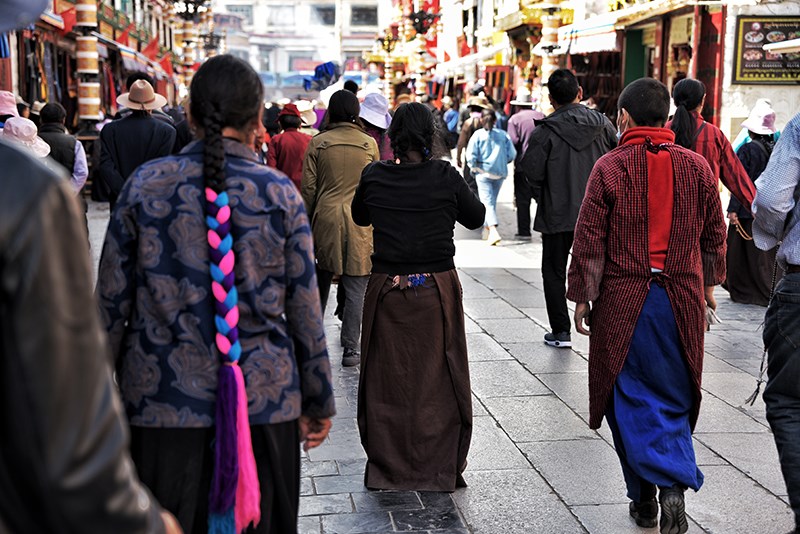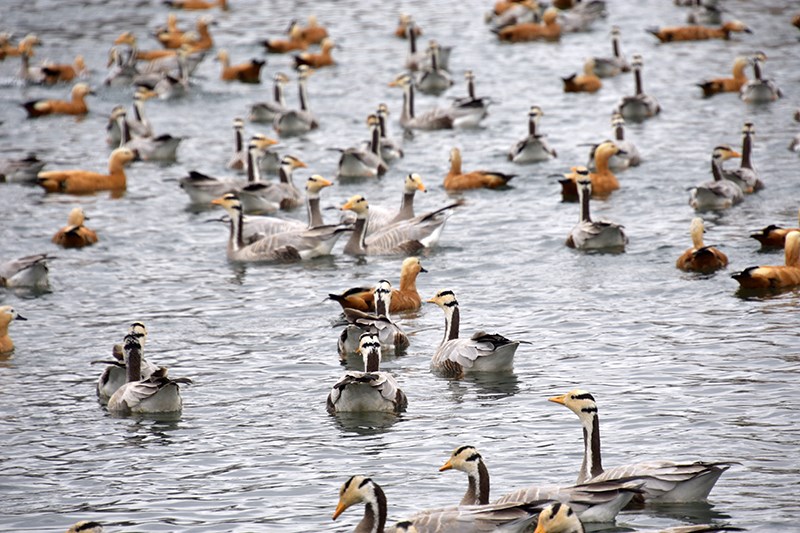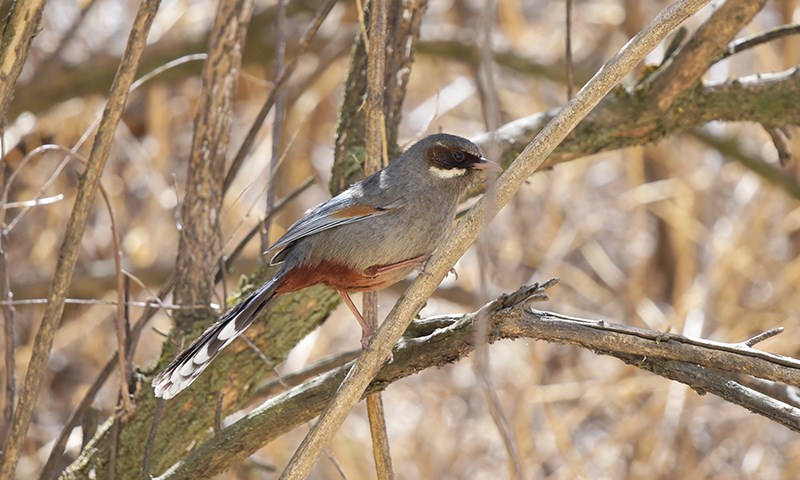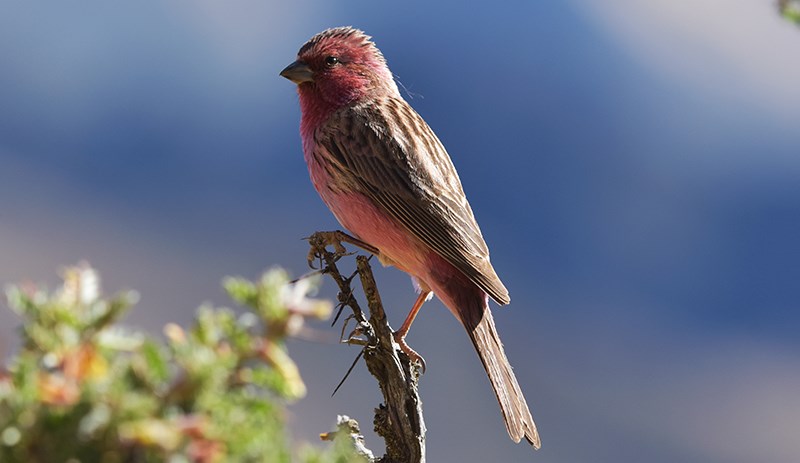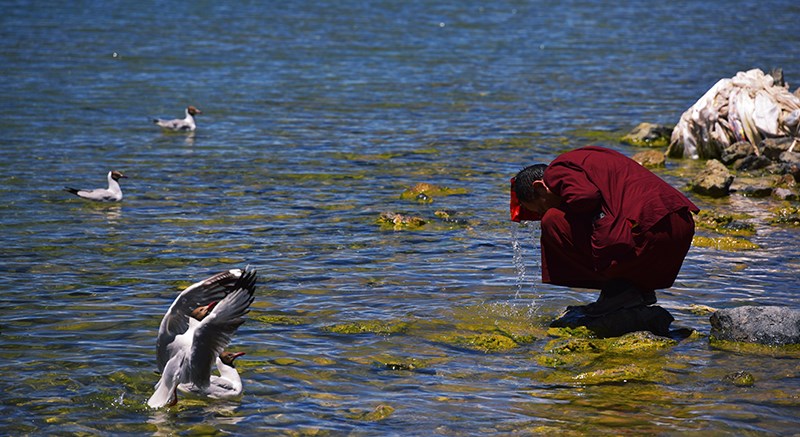As the "roof of the world", Tibet spans large altitudes ranging from dense forest valleys with low elevation to screes with blooming alpine flowers at high mountain pass. People has found 142 species of wild mammals, 488 species of birds, 56 species of reptiles, 45 species of amphibians, 68 species of fish and 799 species of wild vertebrates in Tibet, which constitute the advantage in animal resources in Tibet. Among them, about 123 species of animals have been listed as national-level key protected animal, such as tiger, leopard, monkey, wild yak (Bos mutus), antelope, Eurasian lynx, taiga musk deer, red panda, Eurasian river otter. There are about 45 species of wild vertebrates are endangered or rare and endemic to Tibet, such as Yunnan Snub-Nosed Monkey, Bengal Tiger, snow leopard, kiang, wild yak (Bos mutus), takin, white-lipped deer, red goral, black-necked crane and crimson horned-pheasant (Tragopan satyra). The Qiangtang grassland is the largest natural grassland in Tibet, boasting diverse charm landscapes of Gobi, grasslands, lakes, mountains, boasting the largest wildlife habitat in China and bird island with the highest altitude in the world.
On the trip, we will get into the Qiangtang grassland in northern Tibet. In addition to the beautiful scenery of the plateau, it is like walking into the wildlife world where you can see many rare wild animals and plants, such as:
Endemic Bird Species in Tibet
You can observe Tibetan Eared-pheasant (Crossoptilon harmani), Giant Babax (Babax waddelli), Brown-cheeked Laughingthrush (Garrulax henrici) around Lhasa. However, the others are often observed like Tibetan Snow Cock (Tetraogallus tibetanus), Tibetan Sandgrouse (Syrrhaptes tibetanus), Snowfinch (Montifringilla).
Tibetan Antelope
The area where Tibetan antelopes (Chiru, Pantholops hodgsonii) live spans 1,600 kilometers from east to west, and seasonal migration is an important ecological feature. At the end of April each year, male and female antelopes start to live separately. And male babies under the age of one year will also be separated from female antelopes. By May and June, the ewes and their female babies migrate to the lambing land to give birth to a baby, and then the females lead the young children to back on the original road, which complete a migration process.
Tibetan Gazelle
Tibetan gazelle (Procapra picticaudata) lives on alpine grasslands, meadows and alpine deserts at an altitude of 4300 meters to 5100 meters (the lowest is 3250 meters and the highest is 5500 meters). They find food in the morning and at night, and they are good at running.
Kiang
Kiang (Tibetan wild ass, Equus kiang) lives in high-altitude desert areas, living in high mountains with an altitude of more than 5,000 meters in summer, and in lower altitude places in winter. They like cluster life, and are good at running, and boast high alert. Kiang has the habit of group activities that female and male and young kiangs live a gadabout life together throughout the year. There are 5-8 heads or 20-30 heads per group.
Wild Yak
The wild yaks (Bos mutus) are wild counterparts of domestic yaks and have strong limbs, long hair. The hairs on chest and abdomen almost fall to the ground and could be useful for keeping out wind and rain. Besides, wild yaks boast tooth on their tongue and are ferocious and good at fight. It is a typical alpine animal with extreme cold tolerance and is a unique cattle breed in Qinghai-Tibet Plateau and national first class protected animal. With tall and strong, they have strong cold endurance, drought hardiness and weight ability. Yak meat and yak milk are high-quality sources of protein and heat, and thick fur is the best material to resist the cold. By domesticating wild yaks, humans on the plateau have found a reliable life support.
Black-necked Crane
Black-necked crane (Grus nigricollis) inhabits marshlands, lakes and riverbanks on the plateau with an altitude of 2500-5000 meters, and overwinter in northeast India, southern Tibet, Guizhou, Yunnan and other places in China. It is the only crane in the world that grows and breeds on the plateau.
Woolly Hare
The agile woolly hare (Lepus oiostolus) can be seen everywhere at the lakeside of Tangra Yum Tso and Zhari Nanmu Tso. It is called gray-tailed rabbit that is a relatively larger rabbit.
Tibetan Red Fox
Also called red fox and fire fox, Tibetan red fox (Vulpes montana) boasts slender body, pointed mouth, large ears, short limbs, and drags a long and large tail. Red foxes boast strong adaptable ability, so their habitat is very vast from high mountains to plains, from forests to grasslands, and even the Gobi and desert.
Tibetan Fox
Tibetan fox (Vulpes ferrilata) is widely distributed in Tibet. Due to the sparse population on the plateau, Tibetan foxes aren’t afraid of people generally.
The other wild animals like Tibetan blue bear (horse bear, Ursus arctos pruinosus), snow leopard (Panthera uncial or Uncia uncia) and wolf are often observed.
On this tour, we will surround the Tanggula Mountains, Nyainqentanglha Mountains and Gangdise Mountains where the terrain is vast and flat with many hills and basins, lakes dotted with rivers, rivers flowing among mountains and grasslands. With total area of more than 25,000 square kilometers that is 25% of the total area of China's lakes, Qiangtang is the plateau lake area with the largest number of lakes and the highest lake surface in the world. According to statistics, there are nearly 500 lakes with an area of more than 1 square kilometer and more than 300 lakes with an area of more than 5 square kilometers. Among them, the larger lakes are Nam Tso, Serling Tso, Zhari Nanmu Tso that the lake surface of all of them is more than 1000 square kilometers. On the endless grassland, nomads’ families with big herds of yaks and sheep on which they rely, and their “mobile home” - tents knitted with yak hair, can be seen now and then. The herdsmen have created a legendary and colorful nomadic culture on this vast Qiangtang Grassland. Ancient cliff paintings, many sites of the ancient Zhang Zhung Kingdom and the footprints of the hero King Gesar spread widely in northern Tibet, and the legend of King Gesar is here extolled from generation to generation. Countless mani walls, flying prayer flags and old stupas give more mystery to the vast steppe. It’ll be an enriching bird watching tour and wildlife adventure in Tibet.
